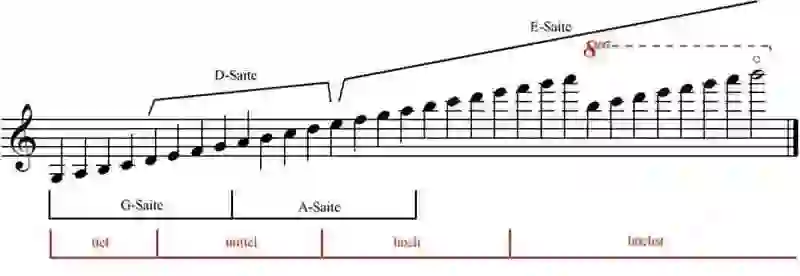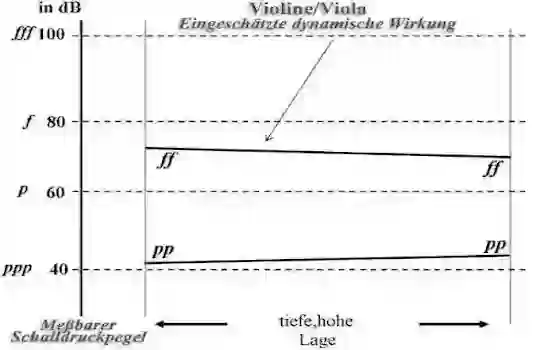Sound character of the violin - Philipp Dangas
Register table of the violin
The tonal properties of the strings of bowed instruments are of the utmost importance for the instrumentation and should be carefully studied in order to make the right choice when instrumenting. The violin scale can be described as homogeneous. But every single string has its own special characteristics. As part of the „symphonic world music“The violin is another instrument intended to create a gentle color contrast. By using it at very specific solo passages as an example.
Download size: 249 kilobytes
Table summary of the sound character of the violin
The following table shows the timbres of the violin briefly described. And the sound character it creates.
Dynamic effect of the violin/viola
Sheet music for the dynamic table of the violin/violaThe levels of musical dynamics are indicated by the representation of the dynamic table. In addition to the sound pressure scale measured in decibels [dB], the degrees of strength of musical dynamics are given on the left, which can be understood as "objective" degrees.
A diagram is drawn next to the dB scale, to the right of it. It shows the estimated dynamic effect over the entire tonal range of the instrument. The dynamic effect (volume) as judged (perceived) by the listener.
The following example illustrates this: In the low register of the trumpet, the dynamic range between pianissimo [pp] 46 decibels [dB] and fortissimo [ff] 82 decibels [dB] = 36 decibels [dB]. In the high register, the range is 8 decibels [dB]. The estimated values can deviate more or less from the "objective" ones.
It can be seen that the deviations vary from instrument to instrument. The mentioned "objective" levels of intensity piano pianissimo [ppp]= 40 decibels [dB], p=60 decibels [dB] etc. enable the composer to predict the dynamic effects of different instruments that are sounding simultaneously.
Table summary of the dynamic range of the violin/viola
The following table shows the achievable dynamic range of the violin or viola shown. The span is the difference between the fortissimo and the pianissimo in the same pitch.

The register table of a violin in a large representation
- E string
- Brilliant, powerful, penetrating and luminous in the piano.
- A string
- Very similar to the D string but with greater intimacy and softness
- D string
- The least powerful, but with a soft color that increases at higher altitudes.
- G string
- Full and noble, but a bit tart and often dark in the lower regions.

The dynamic chart of a violin/viola
Internal search function
| Name | Value | Delete |
|---|